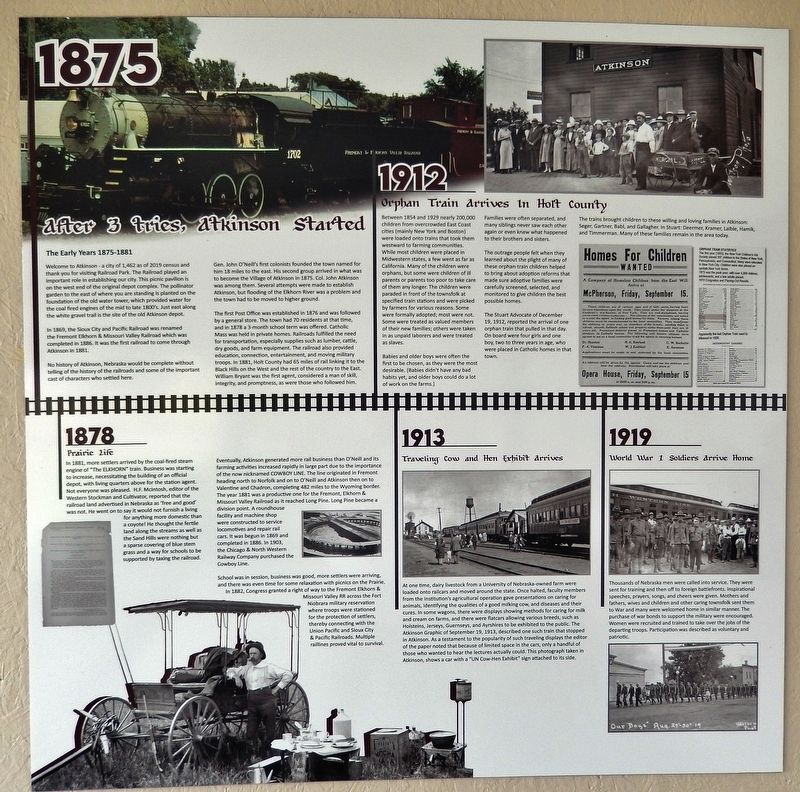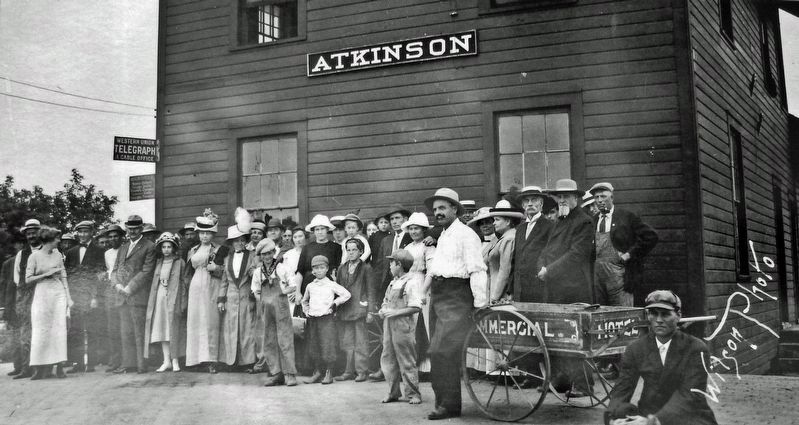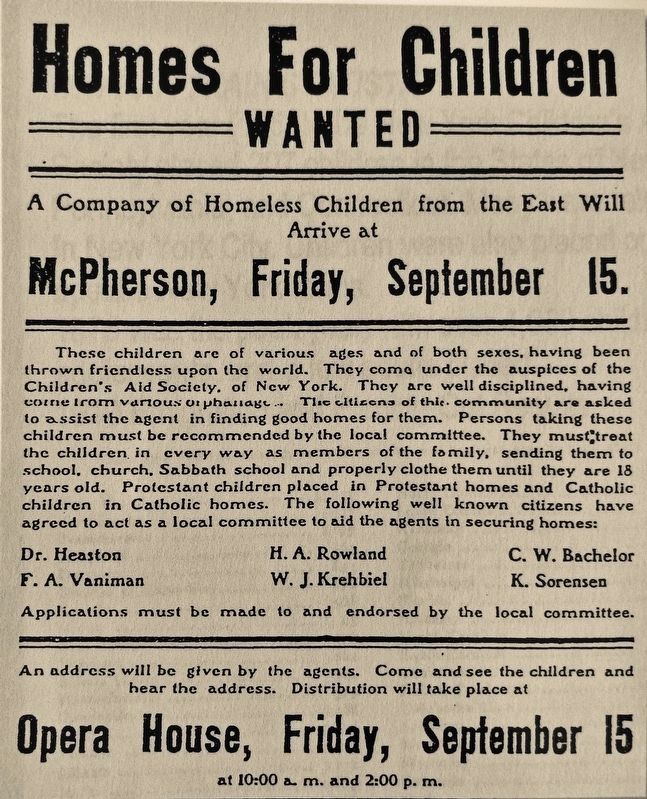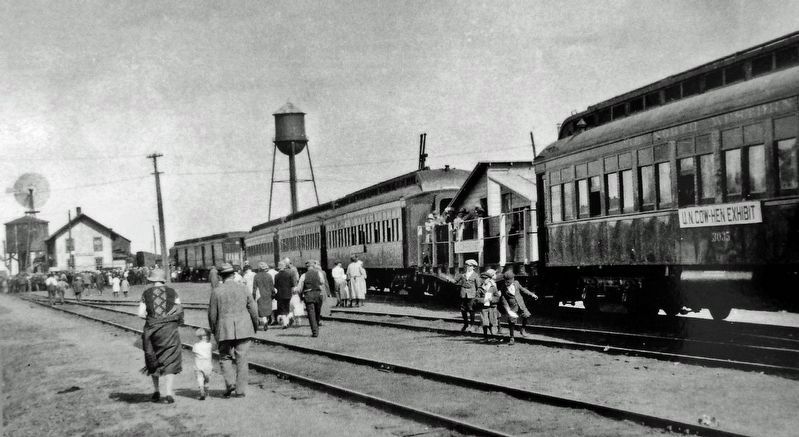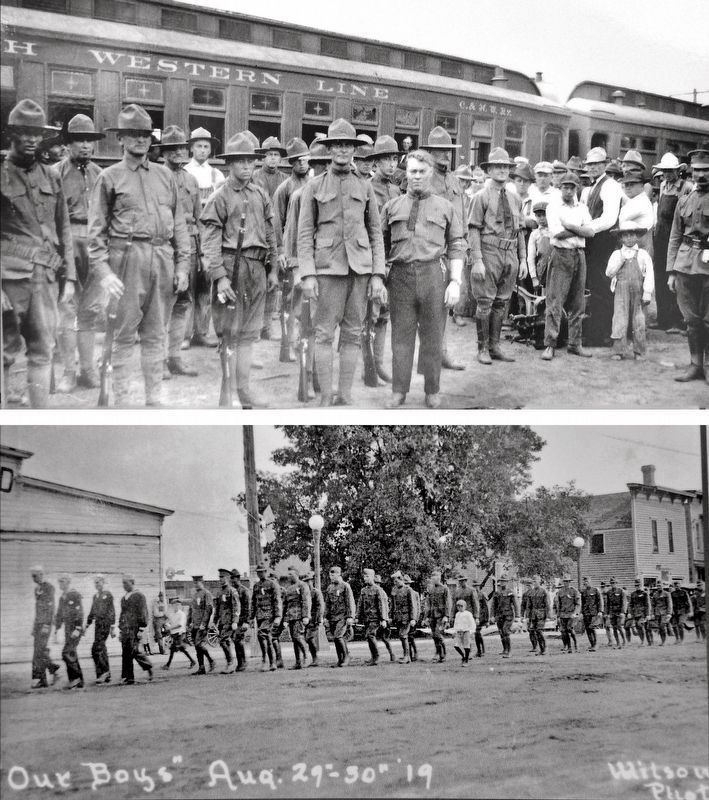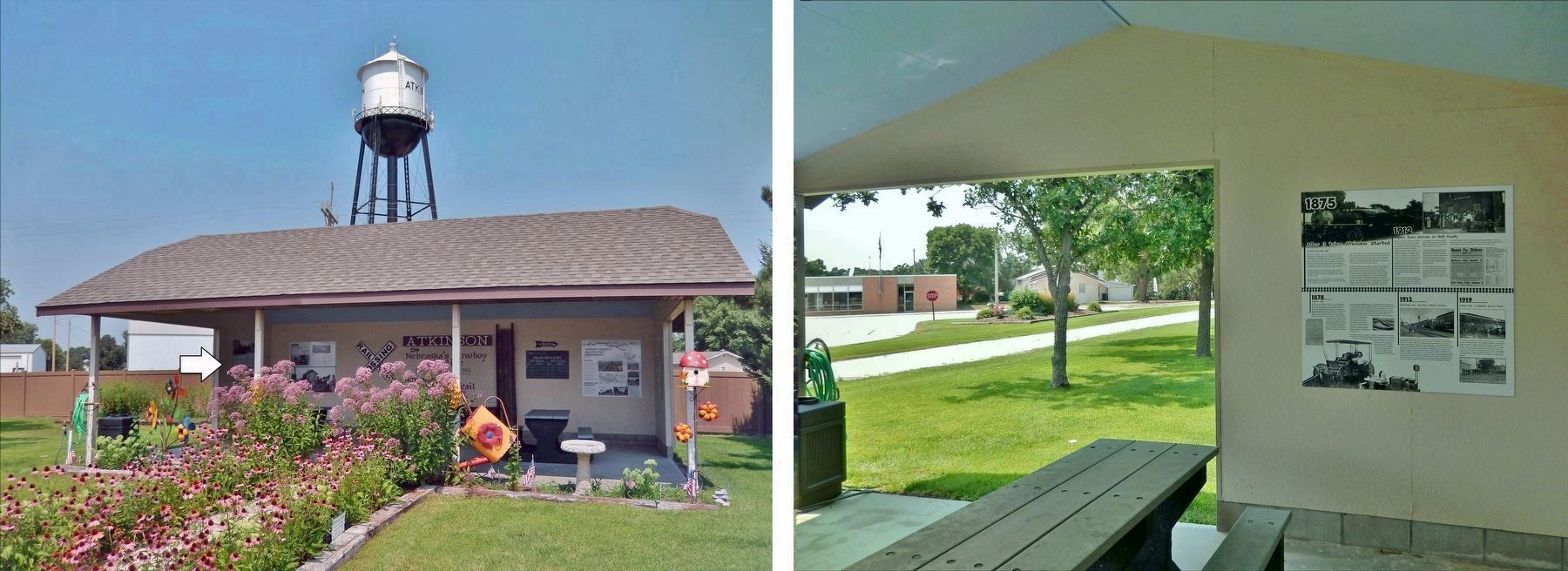Atkinson in Holt County, Nebraska — The American Midwest (Upper Plains)
After 3 Tries, Atkinson Started
1875
The Early Years 1875-1881
Welcome to Atkinson a city of 1,462 as of 2019 census and thank you for visiting Railroad Park. The Railroad played an important role in establishing our city. This picnic pavilion is on the west end of the original depot complex. The pollinator garden to the east of where you are standing is planted on the foundation of the old water tower, which provided water for the coal fired engines of the mid to late 1800's. Just east along the white gravel trail is the site of the old Atkinson depot.
In 1869, the Sioux City and Pacific Railroad was renamed the Fremont Elkhorn & Missouri Valley Railroad which was completed in 1886. It was the first railroad to come through Atkinson in 1881.
No history of Atkinson, Nebraska would be complete without telling of the history of the railroads and some of the important cast of characters who settled here.
Gen. John O'Neill's first colonists founded the town named for him 18 miles to the east. His second group arrived in what was to become the Village of Atkinson in 1875. Col. John Atkinson was among them. Several attempts were made to establish Atkinson, but flooding of the Elkhorn River was a problem and the town had to be moved to higher ground.
The first Post Office was established in 1876 and was followed by a general store. The town had 70 residents at that time, and in 1878 a 3-month school term was offered. Catholic Mass was held in private homes. Railroads fulfilled the need for transportation, especially supplies such as lumber, cattle, dry goods, and farm equipment. The railroad also provided education, connection, entertainment, and moving military troops. In 1881, Holt County had 65 miles of rail linking it to the Black Hills on the West and the rest of the country to the East. William Bryant was the first agent, considered a man of skill, integrity, and promptness, as were those who followed him.
1878 Prairie Life
In 1881, more settlers arrived by the coal-fired steam engine of "The ELKHORN" train. Business was starting to increase, necessitating the building of an official depot, with living quarters above for the station agent. Not everyone was pleased. H.F. McIntosh, editor of the Western Stockman and Cultivator, reported that the railroad land advertised in Nebraska as 'free and good' was not. He went on to say it would not furnish a living for anything more domestic than a coyote! He thought the fertile land along the streams as well as the Sand Hills were nothing but a sparse covering of blue stem grass and a way for schools to be supported by taxing the railroad.
Eventually, Atkinson generated more rail business than O'Neill and its farming activities increased rapidly in large part due to the importance of the now nicknamed COWBOY LINE. The line originated in Fremont heading north to Norfolk and on to O'Neill and Atkinson then on to Valentine and Chadron, completing 482 miles to the Wyoming border. The year 1881 was a productive one for the Fremont, Elkhorn & Missouri Valley Railroad as it reached Long Pine. Long Pine became a division point. A roundhouse facility and machine shop were constructed to service locomotives and repair rail cars. It was begun in 1869 and completed in 1886. In 1903, the Chicago & North Western Railway Company purchased the Cowboy Line.
School was in session, business was good, more settlers were arriving, and there was even time for some relaxation with picnics on the Prairie.
In 1882, Congress granted a right of way to the Fremont Elkhorn & Missouri Valley RR across the Fort Niobrara military reservation where troops were stationed for the protection of settlers, thereby connecting with the Union Pacific and Sioux City & Pacific Railroads. Multiple raillines proved vital to survival.
1912 Orphan Train Arrives in Holt County
Between 1854 and 1929 nearly 200,000 children from overcrowded East Coast cities (mainly New York and Boston) were loaded onto trains that took them westward to farming communities. While most children were placed in Midwestern states, a few went as far as California. Many of the children were orphans, but some were children of ill parents or parents too poor to take care of them any longer. The children were paraded in front of the townsfolk at specified train stations and were picked by farmers for various reasons. Some were formally adopted; most were not. Some were treated as valued members of their new families; others were taken in as unpaid laborers and were treated as slaves.
Babies and older boys were often the first to be chosen, as they were the most desirable. (Babies didn't have any bad habits yet, and older boys could do a lot of work on the farms.)
Families were often separated, and many siblings never saw each other again or even knew what happened to their brothers and sisters.
The outrage people felt when they learned about the plight of many of these orphan-train children helped to bring about adoption reforms that made sure adoptive families were carefully screened, selected, and monitored to give children the best possible homes.
The Stuart Advocate of December 19, 1912, reported the arrival of one orphan train that pulled in that day. On board were four girls and one boy, two to three years in age, who were placed in Catholic homes in that town.
The trains brought children to these willing and loving families in Atkinson: Seger, Gartner, Babl,
and Gallagher. In Stuart: Deermer, Kramer, Laible, Hamik, and Timmerman. Many of these families remain in the area today.
Orphan Train Statistics
The first year (1853), the New York Children's Aid Society placed 207 children in the States of New York, Pennsylvania, and Connecticut. Many were relocated in New York City. Children were also placed on upstate New York farms. 1875 was the peak year, with over 4,000 children, adolescents, and a few adults placed. Apparently the last Orphan Train went to Missouri in 1929.
1913 Traveling Cow and Hen Exhibit Arrives
At one time, dairy livestock from a University of Nebraska-owned farm were loaded onto railcars and moved around the state. Once halted, faculty members from the institution's agricultural operation gave presentations on caring for animals, identifying the qualities of a good milking cow, and diseases and their cures. In some wagons, there were displays showing methods for caring for milk and cream on farms, and there were flatcars allowing various breeds, such as Holsteins, Jerseys, Guernseys, and Ayrshires to be exhibited to the public. The Atkinson Graphic of September 19, 1913, described one such train that stopped in Atkinson. As a testament to the popularity of such traveling displays the editor of the paper noted that because of limited space in the cars, only a handful of those who wanted to hear the lectures actually could. This photograph taken in Atkinson, shows a car with a "UN Cow-Hen Exhibit" sign attached to its side.
1919 World War I Soldiers Arrive Home
Thousands of Nebraska men were called into service. They were sent for training and then off to foreign battlefronts. Inspirational speeches, prayers, songs, and cheers were given. Mothers and fathers, wives and children and other caring townsfolk sent them to War and many were welcomed home in similar manner. The purchase of war bonds to support the military were encouraged. Women were recruited and trained to take over the jobs of the departing troops. Participation was described as voluntary and patriotic.
Topics. This historical marker is listed in these topic lists: Industry & Commerce • Railroads & Streetcars • Settlements & Settlers • War, World I. A significant historical year for this entry is 1875.
Location. 42° 31.948′ N, 98° 58.653′ W. Marker is in Atkinson, Nebraska, in Holt County. Marker can be reached from Railroad Street just east of North Main Street, on the left when traveling east. Marker is located in the Railroad Park kiosk on the north side of Nebraska's Cowboy Trail (rail trail). Touch for map. Marker is in this post office area: Atkinson NE 68713, United States of America. Touch for directions.
Other nearby markers. At least 1 other marker
is within walking distance of this marker. Diamond Anniversary Event Leads to Hay Days (here, next to this marker).
Related markers. Click here for a list of markers that are related to this marker. Atkinson Railroad Park
Also see . . . Atkinson, Nebraska. Wikipedia entry (Submitted on April 10, 2022, by Larry Gertner of New York, New York.)
Credits. This page was last revised on April 10, 2022. It was originally submitted on February 5, 2022, by Cosmos Mariner of Cape Canaveral, Florida. This page has been viewed 518 times since then and 70 times this year. Photos: 1, 2, 3, 4, 5, 6. submitted on February 6, 2022, by Cosmos Mariner of Cape Canaveral, Florida.
